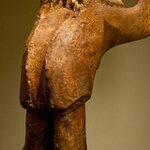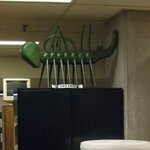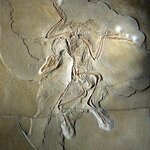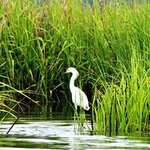Paleontology
The Columbian Mammoth, the official state fossil of Washington, crossed the Bering Land Bridge into North America some one million years ago and made a home roaming the vast grasslands that stretched from Alaska to Mexico, mirroring the great Rocky Mountains, and munching down about 300 pounds of vegetation each day. During the Pleistocene this extinct elephant extended his habitat down into Central America to modern day Nicaragua and Honduras before dying out around 12,500 years ago.
In a previous article published at Scientificblogging, we learned that researchers are working to bring the…

Much of the island of Crete is Miocene and filled with fossil mollusks, bivalves, gastropods who lived 5 to 23 million years ago in warm, tropical seas. They are easily collected from their pink limestone matrix and are often eroded out, mixing with their modern relatives.
Aside from the marine deposits, the island boasts some of the best vertebrate finds, including the remains of Deinotherium giganteum, a massive 8 million-year-old mammal and primative relative of the elephants roaming the Earth today.
With an enormous large nasal opening at the centre of his skull, presumably to house a…
This week's friday fossil is Mesolimulus.
Although it's admittedly very pretty, Mesolimulus is actually a friday fossil because, if you were to wander along the Northwest Atlantic coast, you be forgiven for thinking Mesolimulus had become depetrified, had crawled out of the museums it was held in and had returned to the oceans once again.
This is not Mesolimulus, of course; it is Limulus, the horseshoe crab. But you could be forgiven for mistake it for the Mesozoic fossil, because it is so similar.
I'm not generally a fan of the term living fossil, because it implies that these things have…

Using the Stanford Synchrotron Radiation Lightsource, researchers have examined two fossilized birds, Gansus yumenensis and
Confuciusornis sanctus. Confuciusornis sanctus , which lived 120 million years ago, was one of many evolutionary links between dinosaurs and birds, sporting the first known bird-like beak. Gansus yumenensis, considered the oldest modern bird, lived more than 100 million years ago and looked a bit like a modern grebe.Scientists had previously found melanosomes, the biological "paint pots" where melanin pigments are made and stored, in both ancient and living organisms.…
This week's friday fossil is Cheirotherium (or Isocheirotherium, whichever you want).
Every year, thousands of geology students descend on the tiny Isle of Arran in the inner Hebrides. Its unique in the way you have so many different rocks all crammed next to each other on one tiny island, and so has been host to generation after generation of 1st year geology students from all over britain. Visit Arran in the Easter and you will never be out of sight of either disgruntled (if it's raining) or sunburnt (if it's hot) students, staring confusedly at the rocks on the shore.
The question is: has…
Extraordinary claims require extraordinary evidence. This is true of all science, but especially in palaeontology, where only a handful of exceptional fossils can give a disproportionate amount of weight to a hypothesis. As a consequence, palaeontologists are rightly highly suspicious of exceptional fossils, and thus new finds are, at first, treated with derision and pathological suspicion, until, after much scrutiny, they are found to make the grade.
Never was this more the case than with Archeoraptor. Here was a fossil that had a lot to prove and a long way to fall. But, despite the…

I heard recently on QI that apparently there was a "vacant" position in a museum somewhere for a skeleton of a human to be kept, to be used as the holotype - the reference specimen of Homo sapiens. (Its at the start of the episode below).
For those of you who can't bear to watch Stephen Fry (apparently there are some people out there!), I'll summarise the story as thus: Edward Drinker Cope, a bombastic and rather ruthless paleontologist, realised that there was no H. sapiens holotype, and left it in his will that he wanted his skeleton to be it. However, it was later found that he had…

This rather sorry creature can be found in a lab in the ROM, hidden away with some old CRT monitors,
This guy is Hallucigenia, another fossil from the exquisite Burgess Shale fauna - a contemporary of Anomalocaris of last week's friday fossil.
Hallucigenia is one of the weirdest - and most infamous - fossils to come out of the Burgess Shale - which is really saying something. So why, if it's so famous, is this reconstruction tucked away at the back of the ROM?
Well, that's because it is upside down.
In 1977, it fell to Simon Conway Morris to interpret this strange beastie, which was known…

Firstly, I guess an apology is in order. Its been a hell of a long time since number 4 went out; I got rather caught up with other things and this series then languished on my list of half-written articles. So, apologies for that!
But before we get cracking with the final 3, I thought I'd pick up on an episode of fakery that just wasn't. This is the tale of Archaeopteryx, who has weathered the storm and has retained its place as perhaps the greatest example of a transitional fossil that we have.
The idea that birds are descended from maniraptoran dinosaurs was first proposed by the brilliant…
